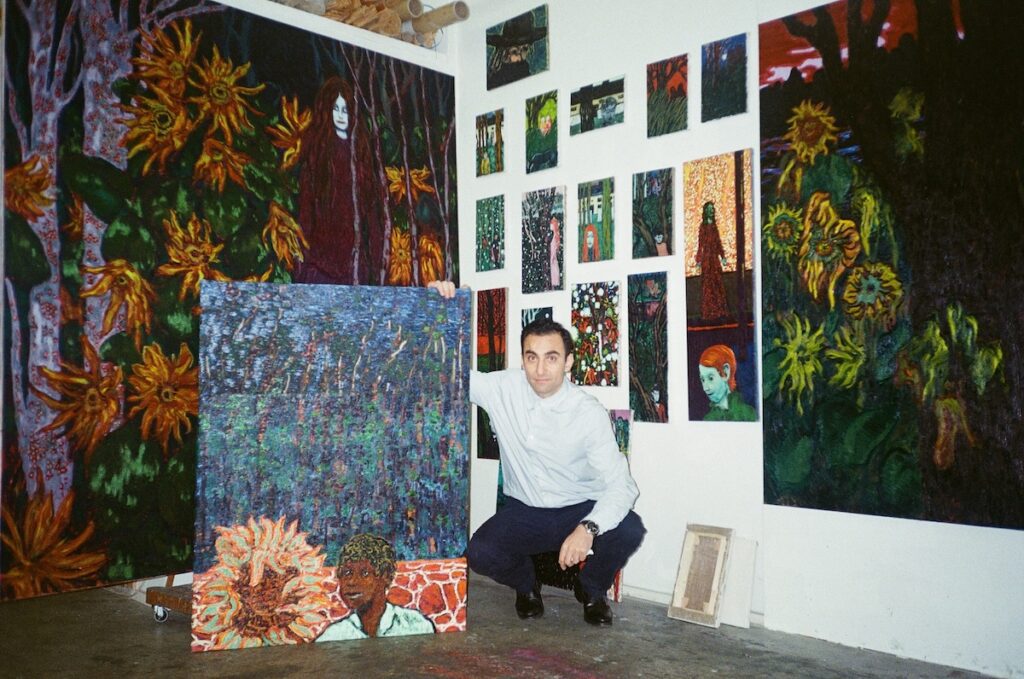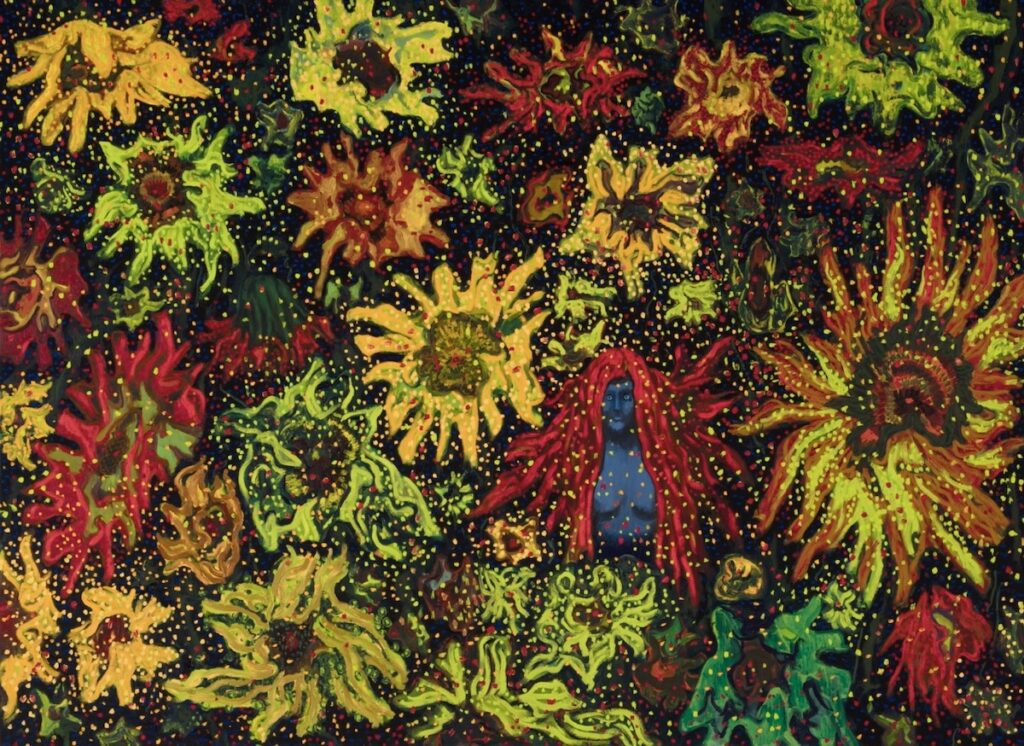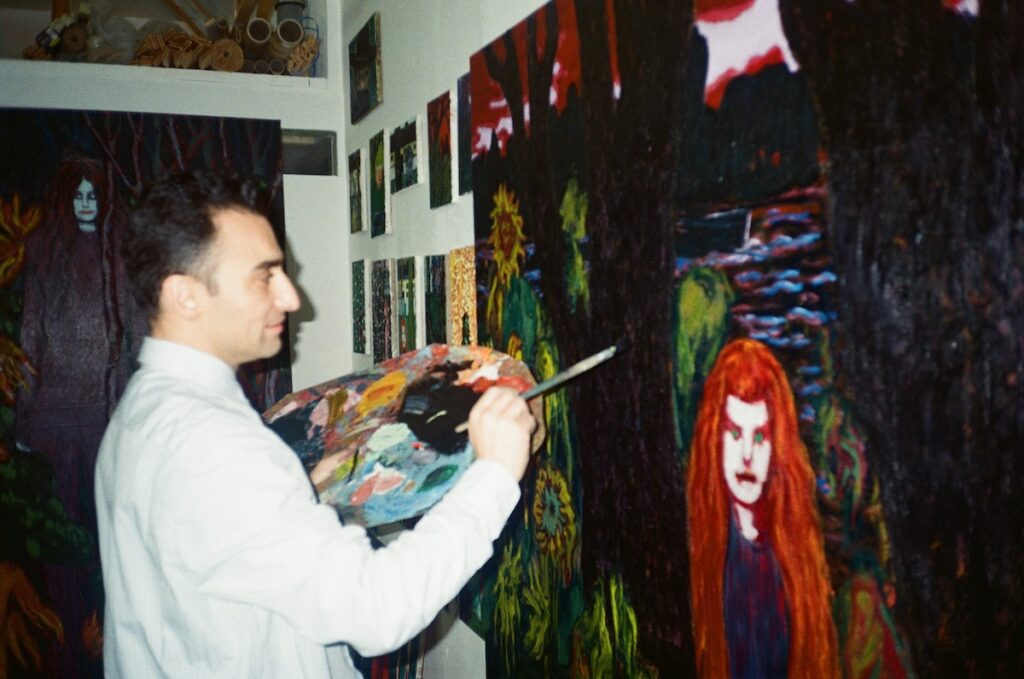This website uses cookies so that we can provide you with the best user experience possible. Cookie information is stored in your browser and performs functions such as recognising you when you return to our website and helping our team to understand which sections of the website you find most interesting and useful.
Interview: Artist Omar El Lahib on his new Saatchi Yates exhibition, his artistic heroes and more
By Shivani Dubey | 14 March 2024 | Arts, Culture
Tempus sits down with the Lebanese artist to learn about his new exhibition and how his culture influences his work
 Omar El Lahib knows a thing or two about art. Born in Sidon, Lebanon, he studied fine art in Germany before moving there permanently. He caught the eye of Saatchi Yates gallery with his ‘starry filled Lebanese landscapes’ while at university, which then led to him exhibiting his inaugural exhibition at the then-new Saatchi Yates gallery in St James, London.
Omar El Lahib knows a thing or two about art. Born in Sidon, Lebanon, he studied fine art in Germany before moving there permanently. He caught the eye of Saatchi Yates gallery with his ‘starry filled Lebanese landscapes’ while at university, which then led to him exhibiting his inaugural exhibition at the then-new Saatchi Yates gallery in St James, London.
Now, Omar is back with his brand new Hypnotic Sunflowers exhibition at the acclaimed gallery. His second solo show at Saatchi blurs the line between the fantastical and the everyday, inviting the viewer into atmospheric, dark landscapes, where intensity is magnified through his application of light and sunflowers take centre stage.
We spoke with Omar ahead of the launch to learn more about his latest exhibition, his artistic inspirations and how his culture influences his work.
What inspired this exhibition?
I don’t believe in inspiration. There was no break between the first exhibition and this one. Some paintings you are seeing here were unfinished before the first show. So I continued my work. I believe in continuity. There was a moment when I realised that I really enjoyed painting sunflowers. So it grew from being a small part of a painting to a major thing. I have painted sunflowers as sunflowers and sunflowers as a kind of abstract colourful composition. I really enjoyed the way that it took my attention and the shift of forms and meaning. How does it feel to come back to Saatchi Yates for this exhibition?
How does it feel to come back to Saatchi Yates for this exhibition?
Saatchi Yates is such a big gallery in the heart of London and it means a lot to be presented by them. The way they have presented my paintings is very professional and beautiful. I was very happy to see how they love to work with my paintings and that they are not afraid to try something new.
The gallery itself is very big with a lot of space to hang art. In this exhibition, there is no special spotlight — no work gets some special attention. They open the space and I don’t know how, but they managed to make the show very homogeneous so that there is no beginning and no ending for the view. I feel very lucky to see this happen.
You play a lot with the juxtaposition of light and dark/day and night in your artworks. Can you talk a little bit about that?
I’m glad that you see this. Many people are very surprised about dark paintings. Dark doesn’t necessarily mean that they are heavy, bad, scary or something else. In fact, sometimes they show me peace, silence, beauty and depth.
Many viewers seem to see the mystical side of my dark paintings — and maybe there is a mystique to it. But it isn’t my goal to paint magic or mystique. I’m just trying to get closer to a true painting of nature and my point of view. When I choose to put a figure surrounded by flowers and stars, I also want to point to a question — to look at things differently without cutting off the rope to what I am surrounded by. Who are your artistic heroes?
Who are your artistic heroes?
Nature is one of my biggest inspirations. And many painters over the centuries. What I think is important is that they are able to show humanity as well as the feeling of struggling, ecstasy and beauty. My favourites are the renaissance painters like Caravaggio, Zurbarán, Goya, da Vinci, Casper David Friedrich, Albrecht Dürer and many others.
How does your cultural and ethnic heritage inspire your creations?
My ethnic heritage is my support system. It reminds me of beauty and simplicity. The Arabs, especially the Lebanese, are famous for their rich culture and for their hospitality. On the other hand, I grew up in Germany and I have a lot of German habits in me. Both sides are helping me create art. However, they are in the background and not the foreground. The centre is occupied by the moment that surprises me during the process of painting.
Finally, what’s next for Omar? What do you plan to do after this exhibition?
Like I said, I’m working continuously and in each exhibition you can find a trace from the last show. So the plan is to keep on working on the unfinished paintings and to begin new ones I’ve already prepared in sketches and colour studies, so that they guide me to more artworks.







